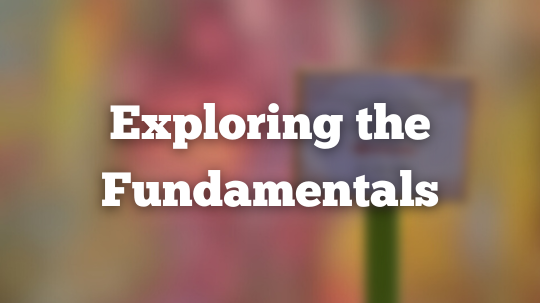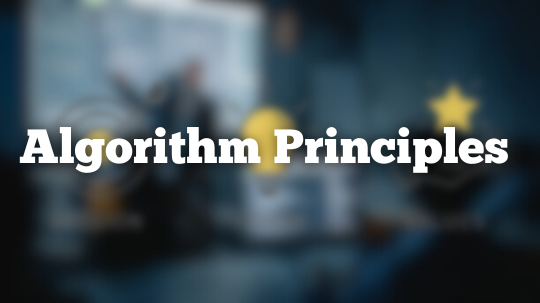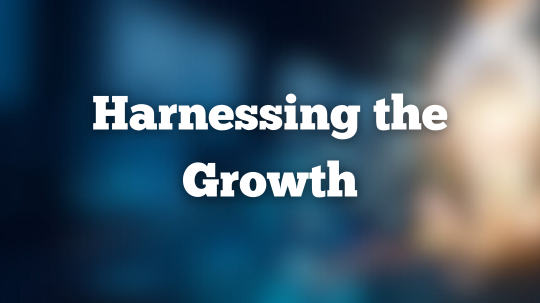
YouTubeEvolved: YouTube 2024 Algorithm

"Do you ever wonder how the YouTube algorithm works?"
Did you know that the success of YouTube videos depends largely on the platform's algorithm? It's true! Since its introduction in 2005, the algorithm has undergone significant changes and still plays a significant role in how millions of users discover and view content on the platform.
Simply put, the algorithm functions like a massive brain that helps YouTube determine which videos to recommend to its users. It considers factors such as the number of views, likes, comments, and shares a video has, as well as the viewer's search history, watch time, and other relevant data. Based on all of this information, the algorithm determines which videos are the most relevant and interesting to each user.
Over the years, the YouTube algorithm has become increasingly sophisticated. It has learned to recognize patterns in user behavior and content, and it has become better at predicting what people will want to watch next. This means that the algorithm is always evolving and constantly improving the viewing experience for YouTube users.
Content creators who want to succeed on YouTube must have a thorough understanding of the platform's algorithm. This is not only a technical aspect, but also a strategic imperative. The algorithm plays a crucial role in determining visibility, reach, and ultimately, success on the platform. In this segment, we will explore the profound impact of the algorithm on content creators. We'll clarify how it affects who thrives and who fades into obscurity, and we'll also discuss the strategies creators can employ to harness its power for channel growth.
Evolution of the YouTube Algorithm

Historical Changes (2005-2023)
Since YouTube's early days, the algorithm has advanced significantly, right? It all began in 2005 before YouTube had an algorithm. Click counts were used by the platform to determine which content was popular. As a result, there was a surplus of clickbait content that wasn't always of good quality.
In the years between 2012 and 2016, the algorithm began to prioritize watch time. Because longer videos tend to keep viewers interested for longer, YouTube began to recommend longer videos. This was a big adjustment that raised the standard of content on the platform as a whole.
However, the most significant shift occurred in 2016 when Google revealed that deep neural networks would be used by the company to make recommendations. This is the algorithm that we know today. It's an advanced system that uses artificial intelligence to analyze user data and suggest videos that viewers are more likely to find interesting.
The purpose of all these modifications is to improve user engagement and experience. The way YouTube's algorithm has changed over time is evidence that the company is constantly looking to improve.
Shifts in Ranking Factors
Ever wonder how YouTube chooses which videos to display to you? The YouTube algorithm is to blame for everything! This sophisticated algorithm, which is constantly evolving, analyzes a wide range of factors to determine which videos you may find interesting.
The algorithm starts by examining user interactions with videos. It now considers things like likes, dislikes, subscriptions, and shares instead of just clicks and watch time. Consequently, a video that receives a lot of likes is more likely to appear in the "recommended" section.
However, it goes beyond what people expressly state they find appealing or repulsive. To determine what kinds of videos you might find interesting, the algorithm also considers your location, search history, and past browsing and viewing activity. We refer to this as "implicit feedback."
The algorithm employs a ranking system to determine which videos to show you first after it has a large selection of them. Once more, it uses implicit feedback and user engagement—the number of people watching, commenting, and sharing the video—to determine which videos are the most engaging.
The algorithm, however, is not just trying to play you the same videos over and over again. Here's the thing. That is uninteresting! Consequently, it also employs a technique known as "randomization" to add some variation and present you with videos you might not have seen otherwise.
All things considered, the YouTube algorithm is a fairly complicated system, but if you're a content creator, knowing how it operates can be quite beneficial. Your chances of getting more recommendations from others can be raised by producing videos people enjoy and interacting with your viewers.
Exploring the Fundamental Elements

Search Results Personalization
You may not be aware, but YouTube offers customized search results specifically for you. It's accurate! Unlike regular search engines, YouTube takes your viewing history and preferences into account to create a personalized experience. This implies that the YouTube search results you see are based on your personal viewing preferences.
The personalization of YouTube search results is made possible by an incredible algorithm. It examines not just the videos you view but also the creators you interact with and follow. For instance, YouTube will recommend vegan Thanksgiving recipes and display additional videos from channels that are similar to your preferences for vegan cooking.
But it goes beyond simply meeting dietary requirements. Additionally, the algorithm strives to maintain your satisfaction as a viewer. To make sure you're seeing videos you want to watch and are interested in, it considers your interactions with content creators and content.
The overall result of all this personalization is an improved YouTube user experience. It's similar to having a personal video assistant that understands your preferences and recommends new videos you'll love. Really cool, huh?
Homepage Video Curation
Have you ever noticed how your homepage on YouTube appears to be precisely tailored to your interests? That's because the algorithm has carefully chosen it. Put differently, its purpose is to present you with videos that you will probably find entertaining based on your previous experiences using the platform.
The algorithm considers a lot of different things when deciding what to show on your homepage. It may, for instance, display videos from creators to whom you have subscribed or videos that are associated with previously viewed content. It may also consider the searches and activities you have recently done on the platform.
However, how can the algorithm predict what you'll find appealing? That's where magic enters the picture. The algorithm learns from your behavior on the platform through machine learning, and it continuously improves its ability to predict your interests.
The outcome is an entirely customized homepage with videos that you will probably find entertaining. And that's no coincidence—the algorithm works incredibly hard to keep you interested and entertained. You'll know exactly who to thank the next time you visit your YouTube homepage and find yourself lost in a world of captivating content!
Suggested Videos and Autoplay
Has it ever occurred to you that the videos on your YouTube homepage appear to be tailored to your specific interests? This is because the homepage was created with you in mind! The mechanism behind it all is the algorithm.
The algorithm functions similarly to a computer program by analyzing your past YouTube viewing and search history. It makes use of this data to determine what you might be interested in watching next. You could compare it to having a personal assistant for your YouTube channel!
As a result, the algorithm will display more cooking videos on your homepage if you've been watching a lot of them. Or, it will display new videos from those creators if you have subscribed to certain channels. Even the time of day and the content that is currently trending on YouTube are taken into consideration by the algorithm.
The algorithm on YouTube gets better at predicting what you'll like the more you use it. As long as it continues to learn and develop, it will be able to present you with entertaining videos.
The algorithm's overall goal is to keep you interested and entertained while using the platform. And it performs it wonderfully! Thank the algorithm for anticipating your viewing preferences the next time you find yourself lost in a fascinating video rabbit hole.
YouTube Shorts Algorithm
Are you familiar with YouTube Shorts? On the platform, this new feature is becoming more and more popular. Shorts were initially kept apart from the regular videos, but it is now a part of the recommendation system. This implies that Shorts will appear in your feed in the same manner as regular videos.
However, how does Shorts' algorithm operate? That's not the same algorithm as the one used for longer videos, though. Previously, creators had different channels for each Short, but now everything is in one location. The algorithm must handle the particular difficulties presented by brief videos, such as recommending them to potential viewers.
On YouTube, short videos are becoming more and more significant. They contribute to the content's diversity and viewer engagement. Actually, a sizable portion of YouTube's algorithm now includes Shorts.
Content creators must comprehend how the algorithm functions. It has an impact on how viewers are recommended to watch your videos and how they appear in search results. You can produce content that has a higher chance of being viewed by the intended audience by understanding how the algorithm operates.
Principles Behind the Algorithm

Feedback Mechanisms
The YouTube algorithm's recommendation engine is powered by feedback mechanisms. The algorithm receives two kinds of feedback to help it make decisions: explicit and implicit. Clicks, likes, dislikes, and subscriptions are examples of explicit feedback that give a clear indication of user preferences. YouTube has recently hidden dislikes, but internal use of this data continues. We describe how explicit signals are used by the algorithm and how the actions of creators impact viewer engagement.
Implicit feedback involves video watch time and shares, which add layers of complexity. In addition to viewing duration, the algorithm takes into account whether a video is completed or stopped too soon. Shares are significant because they show how popular content is. We investigate how the algorithm generates and ranks candidates using both explicit and implicit signals, illuminating the complex interplay between algorithmic choices and user interactions.
User Profile and Preferences
The way the algorithm operates is by using user data to generate customized recommendations. We'll go over each step of the procedure in this section, from data collection to user profile creation. YouTube's algorithm builds unique user profiles that capture demographics and preferences by utilizing sophisticated machine learning and artificial intelligence models. We will not delve into the technical aspects; instead, we will concentrate on how the algorithm organizes users with related interests into clusters that characterize their preferences.
The algorithm's ability to make recommendations depends on user profiles. There are two steps in the process: creating candidates and assigning rankings. A few hundred videos are chosen from the enormous library of content on the platform during the candidate generation stage. Next, engagement metrics become the main focus of the ranking step. We will examine the determinants of ranking, highlighting the transition from implicit preferences to more comprehensive engagement metrics. It becomes clear how the algorithm can introduce diversity and guarantee a variety of suggestions.
The purpose of this section is to clarify the algorithm's process from user data to customized recommendations. By understanding the delicate balance of user-centric recommendations, content creators can gain insights into how to optimize their content for more effective engagement.
Harnessing the Algorithm for Growth

SEO Optimization
You must know how to optimize your videos for search engines if you want them to do well on YouTube. This procedure is called Search Engine Optimization (SEO), and it works similarly to Google blog post optimization. Finding the right keywords is one of the most crucial parts of SEO. This is figuring out what terms and phrases your viewers are looking for and carefully adding them to the titles, descriptions, scripts, subtitles, and tags of your videos. By doing this, you can increase the likelihood that viewers will find your content and assist the algorithm in determining its relevance. You can improve your chances of obtaining algorithmic favor and expanding your YouTube audience by adhering to these SEO guidelines.
Increasing Watch Time
This section explains the importance of watch time in gaining YouTube algorithmic favor and offers practical methods to make the most of it. By putting a strong emphasis on succinct writing, eye-catching hooks, and visually appealing editing, content creators can create captivating videos. Creators can optimize their content for maximum retention by using YouTube Studio to analyze audience engagement patterns. In particular, for YouTube Shorts, the timing of video uploads is critical for improving engagement and producing favorable algorithmic signals. Together, these elements produce a feedback loop that increases visibility and engagement on the platform.
Encouraging Multiple Video Views
Encouraging your audience to watch multiple videos is essential to building a loyal following. Making use of previous videos in newly created content, including video links as cards, and making playlists that direct viewers to relevant content are all good approaches. You can encourage organic linkages between videos by thoughtfully organizing your content and engagement tactics. Successful creators have shown that this strategy works, as seen with playlists for Vlogmas. This broadens the audience and raises the possibility that viewers will suggest content.
Importance of Shares
In this discussion of audience engagement, we emphasize the significance of shares and show that their impact goes beyond subscriptions. Users' homepage content is shaped by implicit feedback, like shares, which has a big influence on candidate generation and ranking. The dual purpose of shares—supporting algorithmic decision-making and acting as organic viewership amplifiers—is highlighted in this section. Through the use of social media platforms such as Facebook, Instagram, and Twitter, content creators ought to endeavor to establish a sharing-friendly environment. Because they are mutually beneficial, shares, algorithmic visibility, and audience growth are strategic cornerstones for content distribution.
Building Niche Credibility
To help content creators strike a balance between delving into wide topics and honing in on a specific niche, this section has been created. It highlights how crucial it is to move from a wide range of video topics to a specific niche to comply with the algorithm's preference for narrowly focused content. The two most important factors in developing credibility and forging stronger bonds with the audience are preparation and consistency. This section provides an overview of the step-by-step process of developing the credibility that the algorithm will reward to maintain engagement.
the importance of transitioning from diverse video topics to a targeted niche in line with the algorithm's preference for focused content. Planning and consistency are the two main factors that drive credibility-building and deeper connections with the audience. This section sheds light on the methodical process of building credibility—an essential component for encouraging long-term interaction and favorable algorithmic feedback.
Attracting Viewers from Other Niches
Diversifying your reach will help you grow your audience. This entails producing content that appeals to readers outside of your primary niche by covering related topics. Finding synergies that increase the appeal of your content and attract a variety of audiences is crucial for content creators. This may increase the likelihood that recommendations will be seen by different user segments. An example of a creator who uses this strategy well is Andrew Rea, whose work offers multiple points of interest in one piece. You can grow your audience and draw in viewers from seemingly unrelated areas by doing this.
Creating Positive Content
We'll talk about the shift in the algorithmic landscape toward producing uplifting and emotionally compelling content in this section. Advertiser preferences and user feedback affect how responsive the algorithm is to positivity. It is recommended that content creators refrain from employing deceptive tactics, controversy, and clickbait, and instead adhere to ethical content practices. Sincerity and a connection with the intended audience are vital, it is important to stress that this holds true for titles and thumbnails in addition to video content. Choosing positive and emotionally compelling content strategically can be a powerful tool for increased algorithmic visibility and audience growth.
Adapting to Algorithm Changes

Dynamic Nature of YouTube Algorithm
This section examines the different modifications made to the YouTube algorithm since its launch in 2005. The algorithm has changed significantly over time, with artificial intelligence driving the current model. The articles describe the algorithm's evolutionary path and emphasize significant changes, like the addition of deep neural networks and the switch from ranking clicks to viewing time. This evolution is important for content creators to understand because it highlights the intricate relationship between algorithmic decision-making, engagement metrics, and user preferences.
Staying Updated and Adapting Strategies
YouTube creators have to stay up to date with the hundreds of algorithm updates that are made on a yearly average. This can be a daunting task but creators should focus on creating exceptional content and adapt their strategies organically. In social media management, EvolvedLotus is a strategic partner that provides insightful analysis of algorithmic changes and guarantees that content creators' output stays in line with the intricacies of the algorithm as well as broader trends in content, viewer preferences, and industry changes. It is encouraged for creators to view algorithm changes as a chance to improve the visibility of their work and the reach of their audience. This section cultivates an agile mindset, putting creators in a position to prosper in the dynamic algorithmic ecosystem.
Conclusion
We'll recap the main strategies covered in the blog to assist creators in getting the most out of the YouTube algorithm in this last section. Todd Beaupre, head of growth and discovery at YouTube, counsels content producers to pay attention to their audience. Creators must understand their audience's preferences, and they should pose audience-centric queries rather than algorithm-centric ones. Video creators should use keywords in their titles, descriptions, scripts, subtitles, and tags to optimize their videos for search engines and increase the visibility of their content.
One important metric that affects algorithmic recommendations is watch time. It is the goal of creators to create captivating content by employing well-written scripts, eye-catching images, and thoughtful upload scheduling. It's crucial to encourage viewers to watch multiple videos, and producers can achieve this by utilizing end screens, playlists, and content linking. Content sharing is important because it can increase viewership beyond current subscribers.
Developing credibility in a specialized area is a long-term endeavor that pays off. Content creators ought to continuously produce material related to the niche they have selected. They can expand their audience base by drawing in viewers from different niches. Uplifting content is now crucial for creators because the algorithm favors emotionally compelling and positive content. This section offers creators a thorough how-to guide for enhancing the visibility and engagement of their channel through the application of practical tactics.
Changes in industry dynamics, technological advancements, and user behavior through changes in history. The four areas of significant influence for creators that the algorithm has in mind are search results, homepage curation, suggested videos, and YouTube Shorts. These areas are all a reflection of the algorithm's sophisticated use of user data to improve viewer satisfaction.
For creators just starting out on YouTube, assist them in navigating the complexities of the algorithm. It illustrates that success is not only about comprehending the algorithm's workings but also about adjusting tactics to flourish in its dynamic ecosystem. This cultivates an appreciation for the symbiotic relationship that exists between creators and the algorithm.

